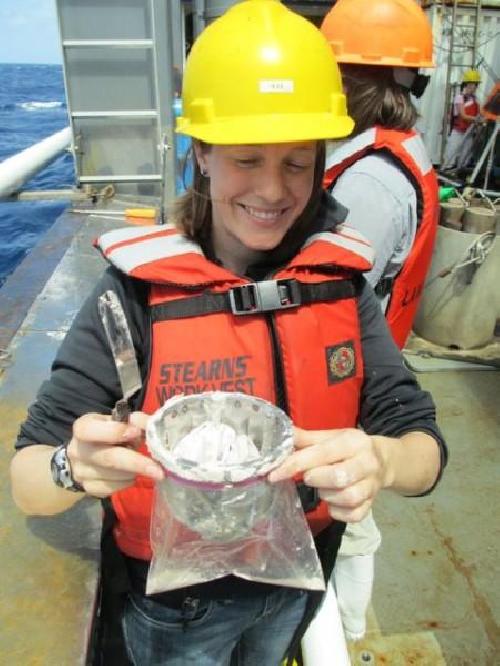Some scientists have been so convinced that iron fertilization will help mitigate carbon increases in the atmosphere that, as in Germany and other countries, they have violated international law with illegal experiments.
Another study has found that fertilizing the oceans with iron to produce more carbon-eating algae will not work as those ecological activists have envisioned.
Plants need trace amounts of iron to perform photosynthesis, but certain parts of the oceans lack it, and thus algae are scarce. Recent shipboard experiments have shown that when researchers dump iron particles into such areas, it can boost growth. The algae draw the greenhouse gas carbon dioxide from the air to help build their bodies, so fertilization on a large scale could, theoretically, reduce atmospheric CO2. Seafloor sediments show that during past ice ages, more iron-rich dust blew from chilly, barren landmasses into the oceans, apparently producing more algae in these areas and, presumably, a natural cooling effect. Some scientists believe that iron fertilization and a corresponding drop in CO2 is one reason why ice ages become icy and remain so.
That is the same sort of specious science reasoning that climate skeptics use when they say that since CO2 is needed for plants, more will be better.
The researchers behind the new study note that increased algae growth in one area can inhibit growth elsewhere - because oceans are not static, they move, and algae also need other nutrients, such as nitrates and phosphates. Given heavy doses of iron, algae in one region may suck up all those other nutrients; by the time the water circulates elsewhere, it has little more to offer, and adding iron doesn't do anything. The study appears today in the leading journal Nature.

"There's only a limited amount of total nutrients in the oceans. So if there's greater use in one area, it seems you'd have lesser concentrations in other areas,"
said lead author Kassandra Costa, a doctoral student at Columbia University's Lamont-Doherty Earth Observatory who led the analysis. "The basic message is, if you add to one place, you may subtract from another."
Much of the equatorial Pacific's near-surface water comes from the Southern Ocean. In the southerly latitudes, powerful winds circle Antarctica. This stirs things like a giant ladle, dredging large amounts of nitrates, phosphates and other nutrients from bottom waters where they tend to settle--so much so, that the nutrients can't all be used up by resident algae. This makes the Southern Ocean an attractive place for potential artificial fertilization; experiments have shown that adding iron there does cause more algae to grow.
Much of this nutrient-rich water eventually sinks and circulates below the surface to the mid-Pacific; the journey takes a century or two. At the equator, the southern water meets with opposing currents from the north and rises, making the nutrients available to near-surface algae. But most of these nutrients pass on by; the mid-Pacific is too far from iron-rich dust sources on land for algae to make much use of them.
In 2012, Lamont scientists conducted a research cruise in this remote region, and took cores from the seabed. Costa and her colleagues analyzed sediments from the cores dating to the last ice age, some 17,000 to 26,000 years ago. As expected, they found two or three times more dust reaching the area compared to today, due to reduced plant cover in the cold, dry climate. Marine plant growth might have been expected to have increased accordingly, but it didn't. The sediments showed that productivity stayed the same, or even declined. Their conclusion: algae in the southerly latitudes, which also got dusted at the same time, snapped up the iron--along with most of the other nutrients. That left the Pacific algae high and dry.
"This shows how different parts of the system are connected," said Lamont marine geochemist Jerry McManus, a coauthor on the paper. "If you push hard in one place, the system pushes back somewhere else." This undercuts the idea that iron fertilization could be a major force in spurring and maintaining ice ages. He said. "That doesn't mean it's not an influence, but the global system may be self-regulating and [that] reduces the potential impact of fertilization," he said. The study does not say so, but McManus adds that it also suggests "we should be very careful about thinking we can use artificial fertilization to combat climate change."




Comments